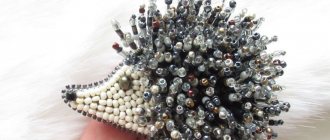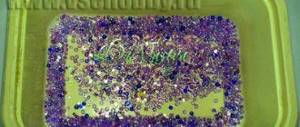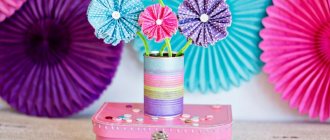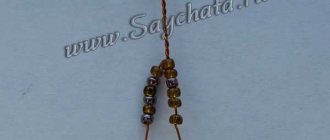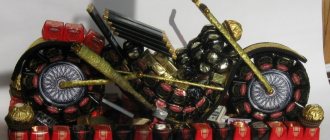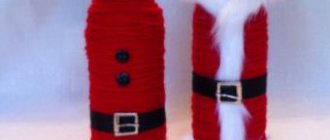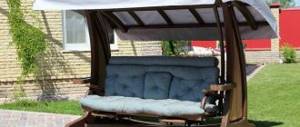How to choose a folder for work?
First you need to decide on the basic parameters. By what criteria is this accessory selected:
- Material of manufacture.
It is hardly worth buying a product made from genuine leather for your child. A folder made of plastic or thick fabric works best. - Size.
The size of the product will depend on what you plan to wear in it. - Clasp type.
Most people have an idea of what a work folder looks like, but it can have a variety of fasteners - zipper, Velcro or ties. The latter will only disturb the child, and not everyone knows how to tie them, so you just have to choose between the first and second option. - Design features.
A work folder for a first-grader can have various pockets, dividers, and clamps, the need for which is determined strictly individually. - Reliability of handles.
And although such an accessory is not intended for carrying school textbooks and notebooks, it is better if the work folder with handles is made of dense, durable material.
Labor folder for girls
Actually, children of both sexes wear the same set of stationery to school and to clubs, but boys’ and girls’ folders are significantly different in design. The latter's school work folders with a zipper demonstrate the brightness of colors, especially typically girly ones - pink, crimson, red. Often the accessories of the fairer sex are decorated with images of fairies and princesses, dolls and cartoon animals. When you look at the folder, it immediately becomes clear what gender the child belongs to.
Labor folder for boys
For boys, blue shades predominate, although there are many universal models on sale that are suitable for all children, without exception. Children's work folders intended for boys are decorated with images of cars and famous cartoon characters, such as Spider-Man or Batman. A photograph of an animal - a dog or a cat - will be a win-win option for both a boy and a girl, so such a folder can be bought without the child’s consent, for example, as a gift.
What to put in a first grader's work folder?
Not everyone knows what should be in this storage device, especially if parents are preparing a first-grader for school. In different schools, the lists may differ slightly, it all depends on the budget of the educational institution and the level of preparation of the students. The teacher announces his requirements at the meeting, which helps to navigate and buy everything you need.
What you need in your labor folder:
- Colored paper.
- Colored and plain white cardboard.
- Plasticine.
- Gouache or watercolor.
- Several different brushes and a glass.
- A glue stick is what should be in the work folder.
- Scissors. Safe ones with rounded ends are better.
- Colour pencils. Markers at the request of the teacher.
- Eraser.
- Ruler.
- Sharpener.
- Modeling board - at the request of the first-grader teacher.
Art school bag. A3 format
To sew a bag we will need:
- Fabric for bags (I had a 0.4 m piece with a width of 1.5 m);
- Quilted raincoat fabric (there was a small remainder);
- Lining fabric - 1 m;
- Edging braid for external edging - 2.5 m;
- Satin bias tape - 1.5 m;
- Sling 3 cm wide - 2.5 m;
- Sling 2 cm wide - 1.5 m;
- Decorative braid 1 cm wide - 1.5 m;
- Contact tape - Velcro - 4 cm;
- Linen elastic - 0.7 m;
- Decorative elastic band wide. 2 cm -1m;
- Zipper 60 cm - 2 pieces or one with two locks 120 cm long;
- Zipper length 23 cm - 1 piece;
- Transparent plastic - A3 format - 1 piece;
- Reflective edging - 0.5 m;
- Half rings diameter 3 cm - 4 pcs;
- Carabiners - 2 pcs;
- A device for adjusting the belt (I don’t remember what it’s called) 3 cm wide;
- A seal for the bag to keep its shape (I have 3 old mats for hot items, I couldn’t think of anything else). Ideally, you need a piece of plastic measuring 72*47 cm
- Scissors (buy at Burda store)
- Pins (buy in the Burda store)
- Marker (buy at Burda store)
Uncover
Cut out rectangles from the main fabric: 28*47 cm - 2 pieces (base parts); 6*58 cm - 2 pcs or 6*114 - 1 pc (side part); 14*25 cm - 1 piece (pocket with zipper); from quilted fabric: 20*47 cm - 1 piece (bottom); from the lining: 72*47 cm - 1 piece (one-piece base part); 6*114 cm - 1 piece (side part); 25*60 cm - 1 piece (pocket for paint); 15*45 cm - 1 piece (pocket for brushes); 18*47 cm - 1 piece (bottom seal).
Sewing
The seam width is 1 cm everywhere. Each seam must be ironed after each sewing operation...
- We sew down the parts of the base and bottom. We sew the seams on the bottom to a width of 5 mm. I add decorative braid to the front of the bag (for beauty), but this is not necessary. We get a workpiece 72*47 cm. We sew together the parts of the side parts (one short cut at a time), lay out the seam in different directions and spread it out to a width of 5 mm, we get a part 6*114.
2. We will round the corners. We place the parts of the lining base on the base part, pin along all the sections (all sections must match, if they don’t match, you need to trim, but don’t get carried away!!!, otherwise the A3 format may not fit). Then we fold it in half, we get a rectangle of 36*47 cm, we chop it off so that all the corners match! And fold it in half again, get 36*23.5 cm, chop it off. We draw a rounding: we step back from the corner along the open cuts by 2.5 cm and draw a rounding (you can take some kind of jar, glass, compass - at your discretion, I draw by hand). Cut off a corner. Remove all the pins.
3. We make the blank for the side part of the bag. We place the zipper face down on the front side of the side part; if necessary, we baste it or pin it with pins (I sew without basting), and adjust it to a width of 5 mm. If there are 2 zippers, as in my case, then first we put one zipper to the center of the side part, bend the corner, and stitch it so that it does not move out. We repeat the same thing with the second lightning. Then we place the side of the lining fabric on the side of the main fabric with the right sides facing inward. We chop and stitch along the cut (where the zipper is sewn) to a width of 1 cm.
We turn it inside out, bend the side parts with the wrong sides inward, sweep along the cut, and stitch to a width of 5 mm. Along the other long cut we also lay a stitch 5 mm wide, so that nothing gets warped later.
4. Preparation of a pocket with a zipper. On the pocket piece along the long cut, place the zipper with the right sides inward, as in step 3. Stitch to a width of 1 cm. Turn the seam allowance to the wrong side, sweep it out, and stitch it to a width of 5 mm. The workpiece is ready.
5. On the parts of the base we mark where the handles and pocket will be located, for this: we measure 10 cm from the upper sections of the bag and draw a line (I use a water-soluble marker, but you can use soap, pins, copy stitches or a simple pencil, provided that it will be erased from this fabric with an elastic band). On this line, measure 11 cm from each edge (sides), put marks, the handles will be at this distance from each other. On the inside of the bag, that is, on the one that will be closer to the body, at a height of 22 cm from the top of the bag, we also mark 11 cm on each side and draw the lines for the location of the pocket.
6. Patch pocket. Fold the seam allowances inward to a width of 1 cm and baste. We apply the blank to the marking, pin the pocket to the base and adjust it to a width of 1 mm. We also adjust the upper part of the zipper to a width of 5 mm.
7. Cut two pieces of sling (2 cm wide) 47 cm each, two pieces of braid - 47 cm each, and two pieces of sling (3 cm wide) - 6 cm and 60 cm each. Narrow sling (2 cm ) we apply it above the intended line (10 cm), apply the braid on top in the center and pin everything to the base. It is better to singe the sections of the sling so that they do not fall off; I do this with matches. We thread small pieces of sling through the half rings and chop them off. We apply it on the left side at a width of 8 cm from the side cut, and hide the ends under a narrow sling and pin it. We insert handles to the center of the marks under a narrow sling and pin them. We set everything up on the basis. Sew along the braid at a distance of 1 mm from the edge on both sides. We make fastenings at the place where the handles are attached. For reliability, the handles can also be reinforced with holniten.
8. Take the reflective edging and bend it 1-1.5 cm on each side, cut off the cord to reduce the thickness of the seam. We also attach a sling, braid and pin it. From the side of the upper cut we insert the edging, do not forget about the handles and the fastening for the long handle. We also set everything up.
9. Paper separator. We take a sheet of transparent plastic, combine it along one long cut and make a rounding of 2.5-3 cm. We edge 3 sides with satin bias tape, those that are rounded. We edge the bottom cut, leaving tails 5 cm long at the beginning and at the end.
10. From a wide elastic band, cut 2 pieces of 8 cm and 2 pieces of 35 cm. We singe the open sections. Cut the Velcro in half. For small pieces of elastic, we retreat 1-1.5 cm from the edge, apply the hard part of the Velcro and adjust it in the shape of an envelope. We apply long pieces of elastic to the upper part of the separator end-to-end at a distance of 10 cm from the edge, apply the corresponding part of the Velcro, and also adjust it with an “envelope”. We fasten so that small pieces do not get lost. We adjust the elastic to the lower edge of the divider, getting into the seam of the edging (without pulling, but also so that the elastic does not sag).
11. Preparing the inner pockets. For each pocket along one long cut we bend 5-7 mm to the wrong side. Then we fold it again to a width of 1-1.5 cm, baste it or chop it off and stitch it close to the fold. Along the other long cut we lay one line at a time with a maximum stitch length at a distance of 5 mm from the edge. We tighten the lower sections: the large pocket to a width of 47 cm, the small one - 37 cm. We insert an elastic band into the upper sections: 40 and 30 cm, respectively.
12. Bottom pocket (for paints). We mark the bottom on the lining: to do this, find the middle and put 3 cm in each direction from the center, draw a line. To mark the pocket for brushes, measure down 13 cm from the top cut and draw a line. On each side we mark 6 cm and draw lines to the top. We combine the parts of the base of the bag with the lining with the wrong sides inward. We apply a large pocket to the base, going 1 cm from the outlined line, with an open cut to the bottom of the bag, and pin it. The bottom seal is 18*47 cm, folded in three and ironed, you get a part 6*47 cm. With this part we cover the open cut of the pocket, pin it and stitch it. The edge of the seal must be exactly at the intended line!!!
13. Prepare the bag seal. We do not touch the two beddings. From the third we add the missing length (my bedding measures 29*44 cm). I cut out two pieces 2.5 cm wide and one 6 cm wide (bottom). Bend the bottom pocket to the bottom. Between the base and the lining, we insert a narrow strip of sealant (2.5*44 cm) inside, pin it together, and machine stitch it. We glue thin double-sided tape onto the seal. We insert the seal between the base part and the lining, and carefully glue the tape to the lining.
14. Top pocket (for brushes) Bend the large pocket to the bottom. We apply the bottom cut of the small pocket to the marked line with the open cut up, and pin it with pins. This cut overlaps the stitching line by the width of the seam - 1 cm. We adjust the pocket not reaching 1 cm at the beginning and at the end (these are allowances for the side seams). We baste the side seam allowances inwards and pin them to the marked lines. We customize the pocket and make fastenings on top. We bend the bottom pocket back up, pin it along the side edges and adjust it. We chop the parts of the base and lining together and stitch them to a width of 5 mm.
15. We insert a sheet of plastic between the base and the lining, pin it together, grabbing the upper seal (from the lining), and also insert the lower (protruding) ends of the elastic band of the separator between the fabric seal and the lining, and adjust it, making fastenings in the places where the elastic is sewn. We bend the divider into pockets, insert a narrow strip of seal between the base and lining parts, chop it off and adjust it. Bend the divider back, pin the side and top edges, stitch them to a width of 5 mm, catching the edges of the elastic fastener and the protruding ends of the bias tape.
16. We make protection against moisture. From the main fabric we cut out a 4*12 cm rectangle. Sew on both sides, turn it inside out, and stitch it. We apply it from the wrong side to the side and adjust it.
17. We pin (or better yet, baste, I pricked all my fingers when I was stitching on the machine) the side part of the bag to the base, lining to lining, open cuts remain on the front side, as well as the other side (with a zipper). We sew (exactly from bottom to bottom) to a seam width of 5 mm. Then we sweep the ends of the side parts to the side parts of the bottom, and stitch (from mark to mark). Now comes the hardest part, at least it seemed so to me). We take the tape and edge the bag along the open edges. I started from the end of the bag - IT'S VERY INCONVENIENT, it's better to start on some long side.
18. Making a long handle. We singe the remains of the wide sling from the ends. We insert it into the half rings and stitch it together. Attach carabiners.
19. The bag is ready. The plastic paper separator can be easily removed.
The separator easily fits A3 paper. On top, under the elastic, you can put smaller paper or a palette.
Nachalochka
Dear colleagues!
This article is intended primarily for kindergarten teachers.
On the Internet you can find a lot of sites with ready-made mobile folders. But one of my visitors, kindergarten teacher Lyubov Nikolaevna, told me about her problem associated with the use of ready-made sliding folders.
From her I learned that:
firstly, not all users know how to download for free from file hosting services, and all links to download ready-made mobile folders lead directly to file hosting services. Secondly, not everyone knows how to add text to an empty template background for a moving folder.
Today I will tell you how you can add text to a template for a mobile folder and, most importantly, where to get free ready-made beautiful and high-quality background templates for mobile folders.
Now we will go to the site maam.ru So, the site page has opened for us. Here we scroll down the page, almost to the end.
Left-click on my screenshots to enlarge.
Now we find the link image “Templates for design”, click on it and go to the next page.
Here we are presented with a selection of background templates for moving folders on various topics. There is a link under each picture. Select the required template and move on (wait for the selected template to load).
Well, now we see in all its glory a complete set of background templates on the chosen topic. All templates and the title page of the future moving folder are made in the same style. Here you can download the template, free of charge, or immediately print a blank template on a color printer, if you need it.
This site has another very useful feature. Right on this page you can enter your text into the template, and then print or save the template with the text.
Click on the title page. A window for typing appears. Type the text and click “Done”.
Now you can download (save) the template with the entered text or print it immediately.
So, the result: fast, convenient, beautiful! There is only one minus - the text can only be typed in black.
I am finishing this article for now, but a continuation will appear soon, in which I will tell you how to enter text into a template using Microsoft Word.
See you! I wish you creative success!
If you liked the article, click on the social buttons and share with your friends. This is the best thanks to the author.
Similar news on this topic:
- How to create beautiful letters in Microsoft PowerPoint?
